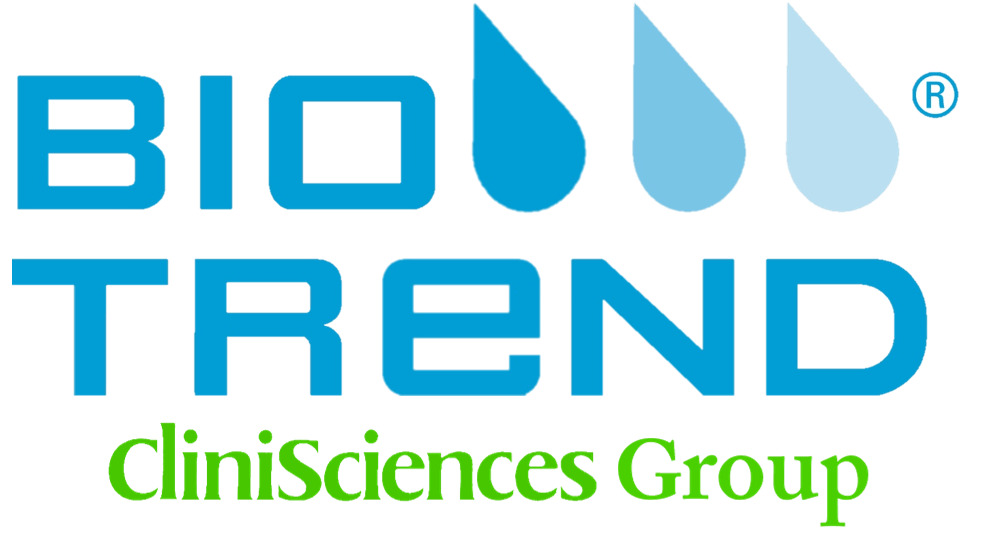Mouse Lipolysis-stimulated lipoprotein receptor (LSR) ELISA Kit
Cat# AE34899MO
Size : 96Tests
Brand : Abebio
Reagent Preparation

Results demonstration
Assay Procedure Summary

Certificate

Product Details
| Species Reactivity | Mouse (Mus musculus) |
| UniProt | Q99KG5 |
| Abbreviation | LSR |
| Alternative Names | ILDR3; LISCH7; MGC10659; MGC48312; MGC48503; LISCH protein|immunoglobulin-like domain containing receptor 3|lipolysis-stimulated receptor|lipolysis-stimulated remnant|liver-specific bHLH-Zip transcr |
| Range | 0.156-10 ng/mL |
| Sensitivity | 0.059 ng/mL |
| Sample Type | Serum, Plasma, Other biological fluids |
| Detection Method | Sandwich |
| Analysis Method | Quantitive |
| Assay Duration | 1-4.5h |
| Sample Volume | �1�-�2�0�0� μ�L |
| Detection Wavelengt | 450 nm |
Test principle
This assay employs a two-site sandwich ELISA to quantitate LSR in samples. An antibody specific for LSR has been pre-coated onto a microplate. Standards and samples are pipetted into the wells and any LSR present is bound by the immobilized antibody. After removing any unbound substances, a biotin-conjugated antibody specific for LSR is added to the wells. After washing, Streptavidin conjugated Horseradish Peroxidase (HRP) is added to the wells. Following a wash to remove any unbound avidin-enzyme reagent, a substrate solution is added to the wells and color develops in proportion to the amount of LSR bound in the initial step. The color development is stopped and the intensity of the color is measured.
Product Overview
LSR is a multimeric protein complex in the liver that undergoes conformational changes upon binding of free fatty acids, thereby revealing a binding site (s) that recognizes both apoB and apoE. Complete inactivation of the LSR gene is embryonic lethal in mice.LSR cooperates with the LDL receptor in the final hepatic processing of apoB-containing lipoproteins and represents a novel therapeutic target for the treatment of hyperlipidemia associated with obesity and atherosclerosis. The lipolysis-stimulated receptor (LSR) is a lipoprotein receptor primarily expressed in the liver and activated by free fatty acids. Antibodies inhibiting LSR functions showed that the receptor is a heterotrimer or tetramer consisting of 68-kDa (alpha) and 55-kDa (beta) subunits associated through disulfide bridges.
Components
Reagents | Quantity | Reagents | Quantity |
Assay plate (96 Wells) | 1 | Instruction manual | 1 |
Standard (lyophilized) | 2 | Sample Diluent | 1 x 20 mL |
Biotin-Conjugate (concentrate 100 x) | 1 x 120 μL | Biotin-Conjugate Diluent | 1 x 20 mL |
Streptavidin-HRP (concentrate 100 x) | 1 x 120 μL | Streptavidin-HRP Diluent | 1 x 20 mL |
Wash Buffer (concentrate 25 x) | 1 x 20 mL | Substrate Solution | 1 x 10 mL |
Stop Solution | 1 x 10 mL | Adhesive Films | 4 |
Specificity
This assay has high sensitivity and excellent specificity for detection of Mouse LSR. No significant cross-reactivity or interference between Mouse LSR and analogues was observed.
Recovery
Matrices listed below were spiked with certain level of recombinant Mouse LSR and the recovery rates were calculated by comparing the measured value to the expected amount of Mouse LSR in samples.
Sample Type | Number | Recovery range (%) | Average(%) |
Serum | 10 | 90-101 | 96 |
EDTA plasma | 10 | 89-97 | 93 |
Heparin plasma | 10 | 91-99 | 95 |
Precision
Intra-assay Precision (Precision within an assay) Three samples of known concentration were tested twenty times on one plate to assess intra-assay precision. Inter-assay Precision (Precision between assays) Three samples of known concentration were tested in forty separate assays to assess inter-assay precision. CV (%) = SD/meanX100 Intra-Assay: CV<8% Inter-Assay: CV<12%
Linearity
The linearity of the kit was assayed by testing samples spiked with appropriate concentration of Mouse LSR and their serial dilutions. The results were demonstrated by the percentage of calculated concentration to the expected.
Sample Type | 1:2 | 1:4 | 1:8 | 1:16 |
Serum | 78-89% | 81-99% | 92-103% | 95-105% |
EDTA plasma | 91-101% | 90-98% | 93-101% | 91-98% |
Heparin plasma | 92-103% | 93-102% | 92-99% | 91-101% |
Stability
The stability of ELISA kit is determined by the loss rate of activity. The loss rate of this kit is less than 5% within the expiration date under appropriate storage condition. The loss rate was determined by accelerated thermal degradation test. Keep the kit at 37°C for 4 and 7 days, and compare O.D.values of the kit kept at 37°C with that of at recommended temperature. (referring from China Biological Products Standard, which was calculated by the Arrhenius equation. For ELISA kit, 4 days storage at 37°C can be considered as 6 months at 2 - 8°C, which means 7 days at 37°C equaling 12 months at 2 - 8°C).
Sample collection and storage
�S�e�r�u�m�:� �U�s�e� �a� �s�e�r�u�m� �s�e�p�a�r�a�t�o�r� �t�u�b�e� �(�S�S�T�)� �a�n�d� �a�l�l�o�w� �s�a�m�p�l�e�s� �t�o� �c�l�o�t� �f�o�r� �t�w�o� �h�o�u�r�s� �a�t� �r�o�o�m� �t�e�m�p�e�r�a�t�u�r�e� �o�r� �o�v�e�r�n�i�g�h�t� �a�t� �2� �-� �8°�C� �b�e�f�o�r�e� �c�e�n�t�r�i�f�u�g�a�t�i�o�n� �f�o�r� �1�5� �m�i�n�u�t�e�s� �a�t� �1�0�0�0� ×� �g�.� �R�e�m�o�v�e� �s�e�r�u�m� �a�n�d� �a�s�s�a�y� �i�m�m�e�d�i�a�t�e�l�y� �o�r� �a�l�i�q�u�o�t� �a�n�d� �s�t�o�r�e� �s�a�m�p�l�e�s� �a�t� ≤� �-�2�0°�C�.� �A�v�o�i�d� �r�e�p�e�a�t�e�d� �f�r�e�e�z�e�-�t�h�a�w� �c�y�c�l�e�s�.� �P�l�a�s�m�a�:� �C�o�l�l�e�c�t� �p�l�a�s�m�a� �u�s�i�n�g� �E�D�T�A�,� �o�r� �h�e�p�a�r�i�n� �a�s� �a�n� �a�n�t�i�c�o�a�g�u�l�a�n�t�.� �C�e�n�t�r�i�f�u�g�e� �f�o�r� �1�5� �m�i�n�u�t�e�s� �a�t� �1�0�0�0� ×� �g� �a�t� �2� �-� �8°�C� �w�i�t�h�i�n� �3�0� �m�i�n�u�t�e�s� �o�f� �c�o�l�l�e�c�t�i�o�n�.� �A�s�s�a�y� �i�m�m�e�d�i�a�t�e�l�y� �o�r� �a�l�i�q�u�o�t� �a�n�d� �s�t�o�r�e� �s�a�m�p�l�e�s� �a�t� ≤� �-�2�0°�C�.� �A�v�o�i�d� �r�e�p�e�a�t�e�d� �f�r�e�e�z�e�-�t�h�a�w� �c�y�c�l�e�s�.� �O�t�h�e�r� �b�i�o�l�o�g�i�c�a�l� �f�l�u�i�d�s�:� �C�e�n�t�r�i�f�u�g�e� �s�a�m�p�l�e�s� �f�o�r� �2�0� �m�i�n�u�t�e�s� �a�t� �1�0�0�0� ×� �g�.� �R�e�m�o�v�e� �p�a�r�t�i�c�u�l�a�t�e�s� �a�n�d� �a�s�s�a�y� �i�m�m�e�d�i�a�t�e�l�y� �o�r� �s�t�o�r�e� �s�a�m�p�l�e�s� �i�n� �a�l�i�q�u�o�t� �a�t� �-�2�0°�C� �o�r� �-�8�0°�C�.� �A�v�o�i�d� �r�e�p�e�a�t�e�d� �f�r�e�e�z�e�/�t�h�a�w� �c�y�c�l�e�s�.
Kits storage instructions
Store at 2-8°C. Please refer to Instruction Manual.


